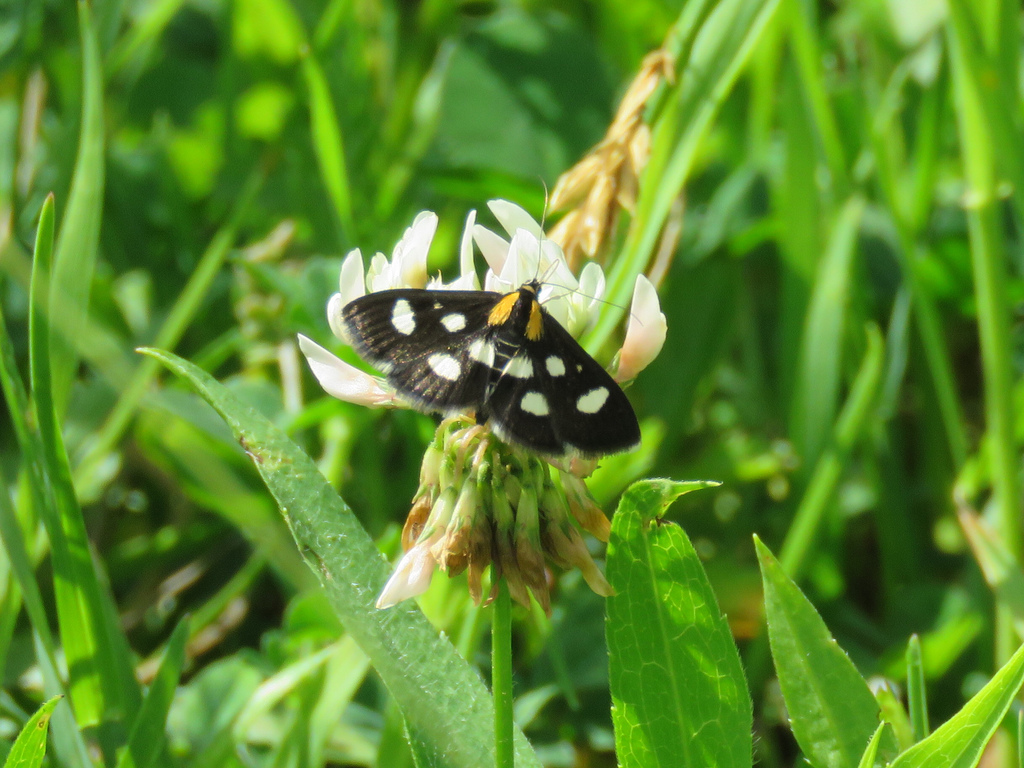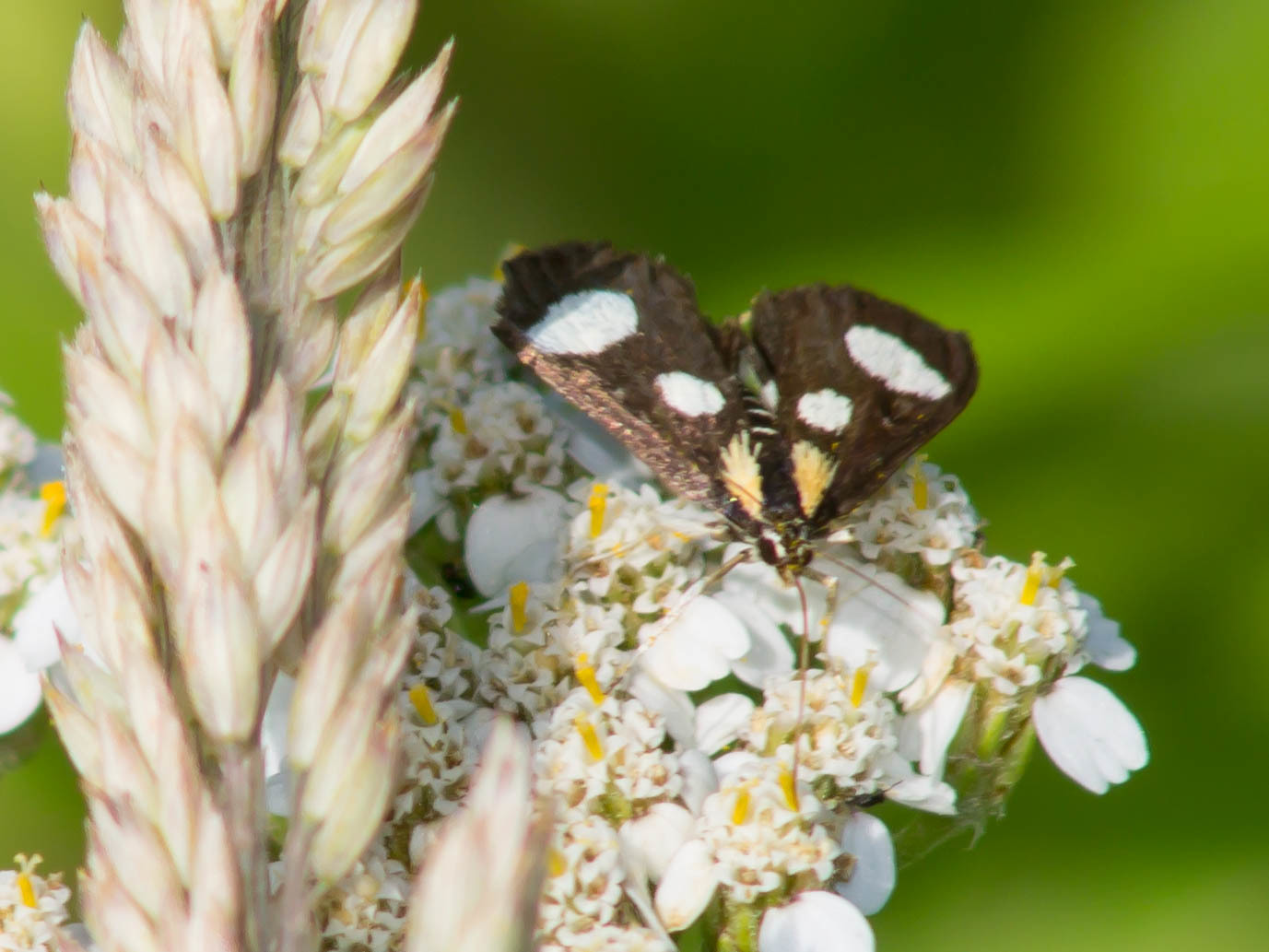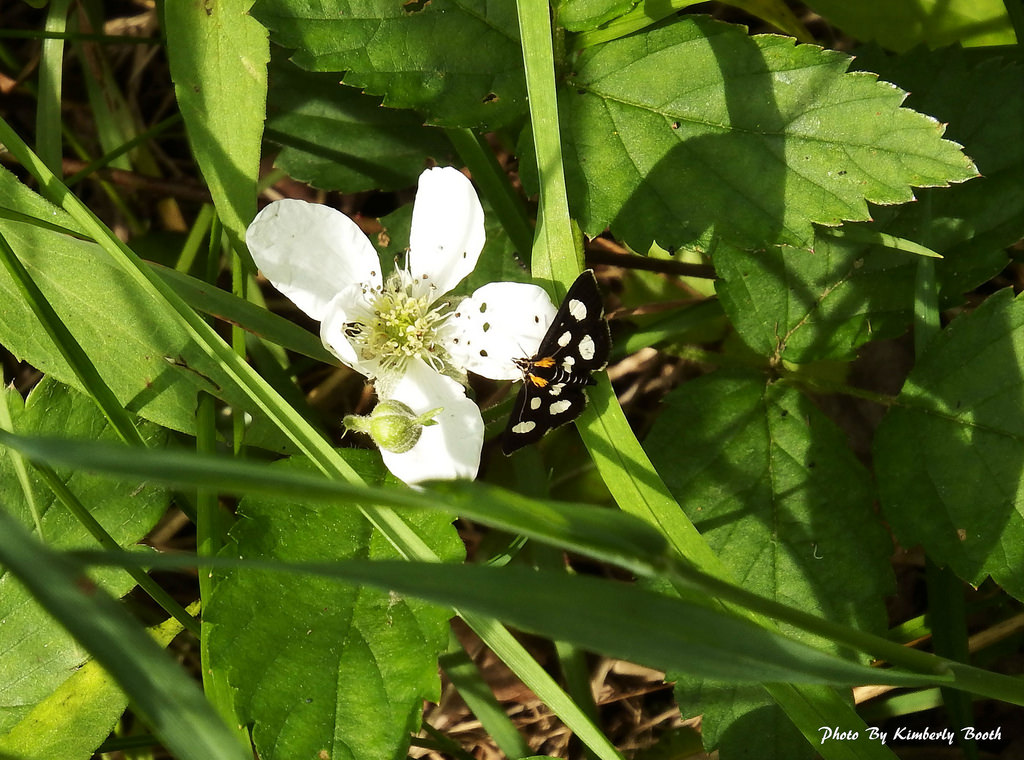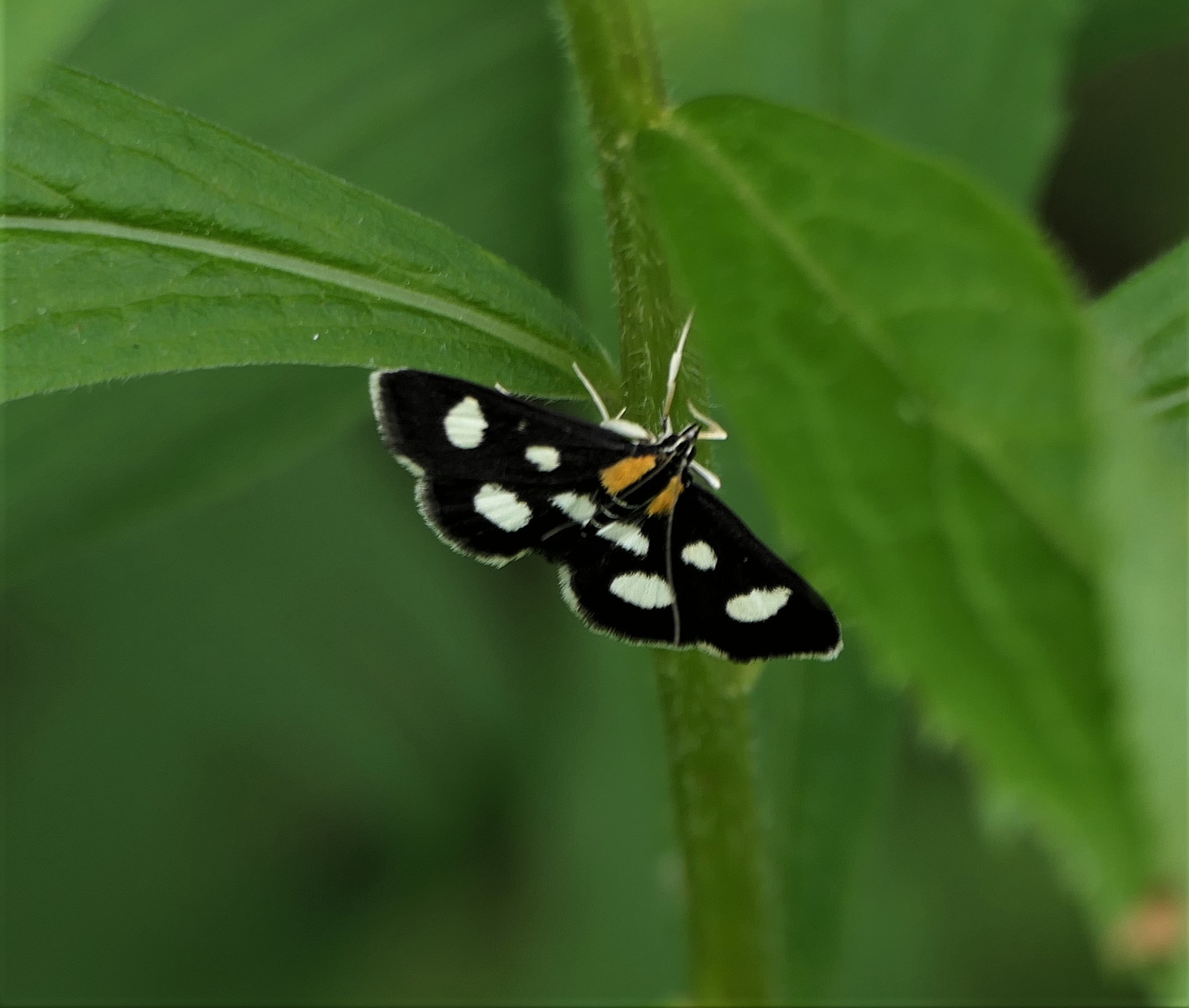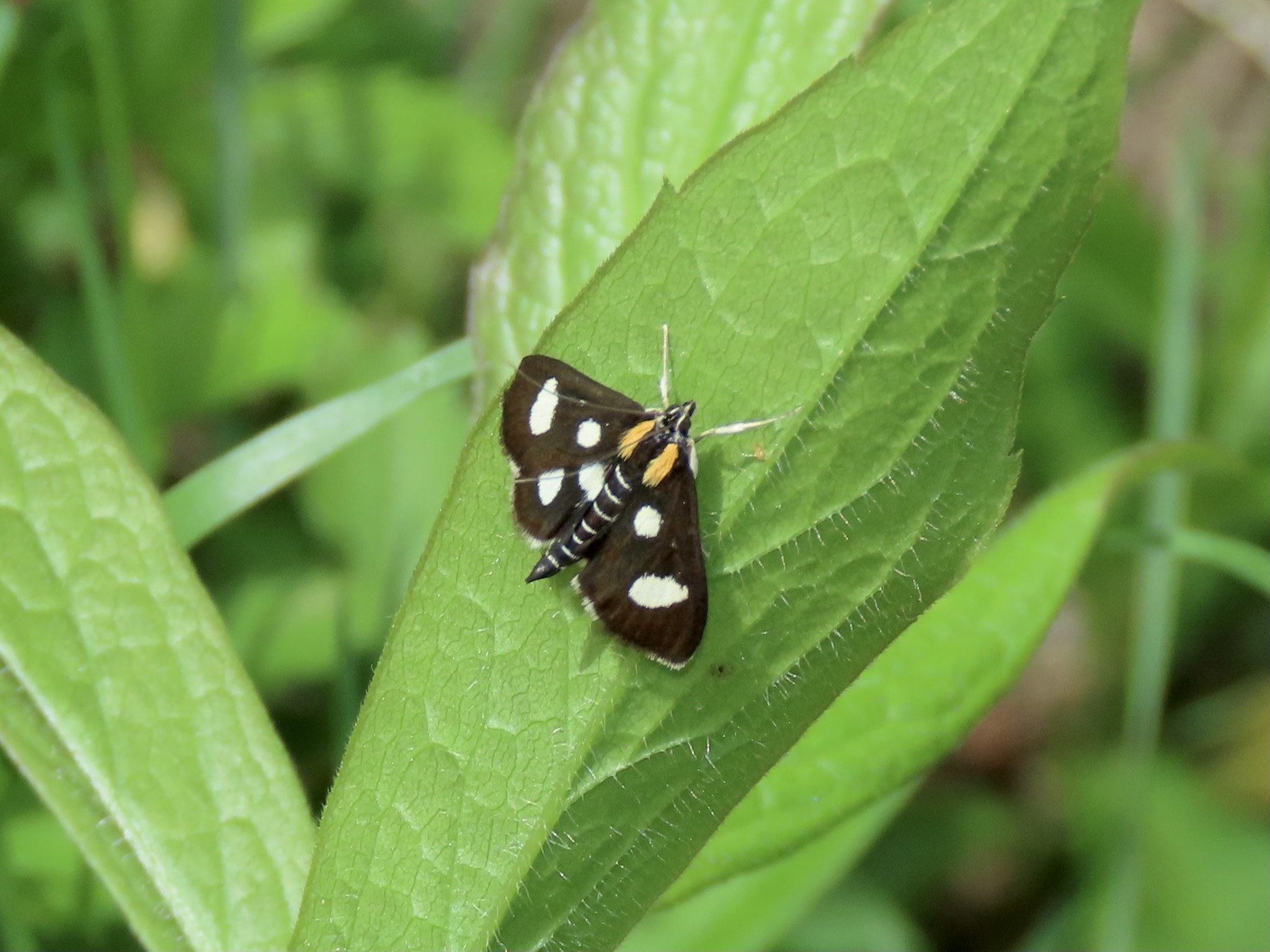Map Snapshot






45 Records
Description
Compare Eight-spotted Forester Moth.
Seasonality Snapshot
Source: Wikipedia
| White spotted sable | |
|---|---|

| |

| |
| Scientific classification | |
| Domain: | Eukaryota |
| Kingdom: | Animalia |
| Phylum: | Arthropoda |
| Class: | Insecta |
| Order: | Lepidoptera |
| Family: | Crambidae |
| Genus: | Anania |
| Species: | A. funebris
|
| Binomial name | |
| Anania funebris (Ström, 1768)
| |
| Synonyms | |
| |
Anania funebris, the white-spotted sable, is a species of diurnal dayflying moth of the family Crambidae.[1][2][3] It is wide-spread in Europe, northern Asia, and North America.[4]
Subspecies
[edit]There are two subspecies:[3][4]
- Anania funebris funebris (Ström, 1768) – Eurasia
- Anania funebris glomeralis (Walker, 1859) – North America
Description
[edit]The wingspan is 20–23 mm (0.79-0.92 in). The forewings are black; a large round white subdorsal spot before middle, and a second in disc beyond middle; sometimes a white dot above first; cilia white towards tips. Hindwings as forewings, but without the white dot. The larva is ochreous-whitish; dorsal line deep green; subdorsal and lateral green; spiracular whitish-green; dots green; head whitish-brown.[5]

Behavior
[edit]The adults have a tendency to quickly hide behind leaves.[6]
The moth flies during the day[7] from late April to August,[8] June and July being the most active in their flight season.
Diet
[edit]The larvae feed on leaves of goldenrod (Solidago) such as Solidago virgaurea. It occasionally feeds on dyer's greenweed (Genista tinctoria).[2][7][9][8]
References
[edit]- ^ "Anania funebris (Ström, 1768)". Fauna Europaea. 2011.
- ^ a b "Species Anania funebris - White-spotted Sable - Hodges#4958". Bug Guide. Retrieved 6 September 2024.
- ^ a b "Anania funebris Ström, 1768". Global Lepidoptera Index 1.1.24.240. 27 August 2024. Retrieved 6 September 2024.
- ^ a b Savela, Markku. "Anania Hübner, 1823". Lepidoptera and some other life forms. Retrieved 6 September 2024.
- ^ Meyrick, E., 1895 A Handbook of British Lepidoptera MacMillan, London pdf
 This article incorporates text from this source, which is in the public domain. Keys and description
This article incorporates text from this source, which is in the public domain. Keys and description
- ^ "White-spotted Sable Moth - Anania funebris". North American Insects & Spiders. Retrieved 2023-06-06.
- ^ a b Kimber, Ian. "Anania funebris (Ström, 1768)". UK Moths. Retrieved 6 September 2024.
- ^ a b "Anania funebris (Ström, 1768)". Catalogue of the Lepidoptera of Belgium. Flemish Entomological Society. 18 October 2023. Retrieved 6 September 2024.
- ^ "White-spotted Sable". butterfly-conservation.org. Retrieved 2023-06-06.

